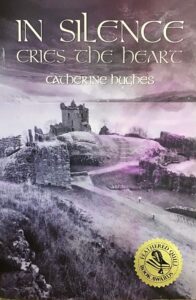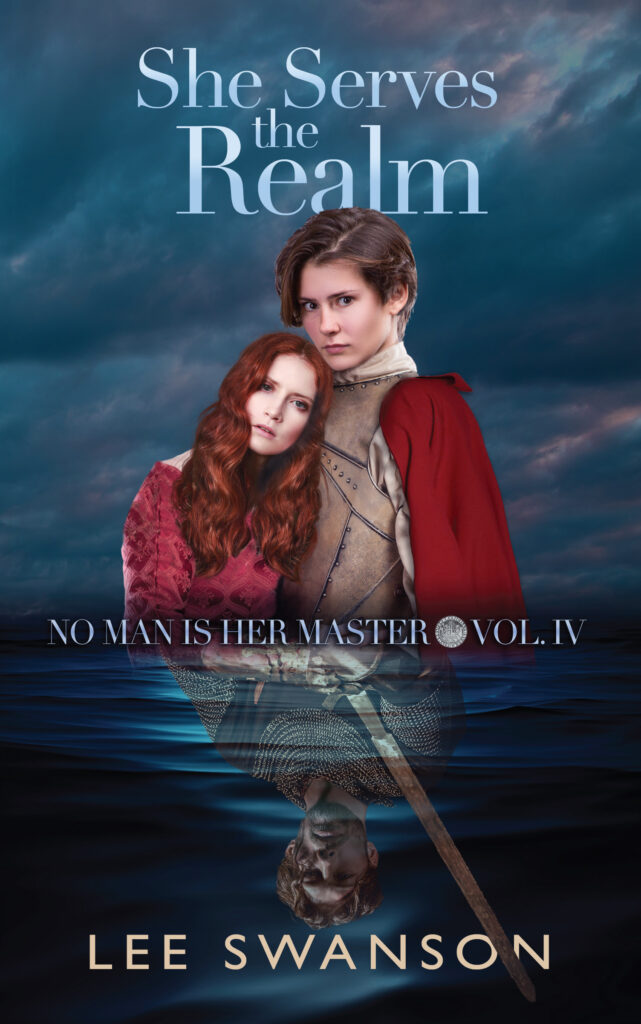Launch: Catherine Hughes’ In Silence Cries the Heart
INTERVIEW BY LESLIE S. LOWE
Catherine Hughes, a high school English teacher, came upon the story of Mary Grant and Domhnull Donn after visiting Scotland’s Urquhart Castle, the site of their courtship and Domhnull’s later imprisonment. Forbidden to be together in their own time, the laird’s daughter and the rebel poet cried out from beyond the grave, beckoning for someone to listen. Catherine, who resides in Long Beach, NY, heeded their call. The novel is a finalist in the Readers’ Choice Book Awards. Her second novel in progress, Therein Lies the Pearl, was shortlisted in the HNS 2024 First Chapters Ancient to 16th century category.
How would you describe this book and its themes in a couple of sentences?
What kind of love could be so strong that it would be worth dying for? In Silence Cries the Heart provides an answer to such a question. Based on true events that occurred at Urquhart Castle in 17th-century Scotland, the novel features the intense passion that develops between the laird’s daughter, Mary Grant, and rebel poet and cattle thief, Donal Donn. Forbidden to be together in their own lifetime, they reach out beyond the grave, beckoning for readers to listen.
 What inspires you about history and what has been most rewarding about teaching it? How do you keep students of today’s modern society enthralled in learning history?
What inspires you about history and what has been most rewarding about teaching it? How do you keep students of today’s modern society enthralled in learning history?
I am a teacher of English, but we do spend a good deal of time on historical background. I love encouraging today’s students to peel away the layers that separate us from those who lived long ago and instead come to understand how—at the core—human experience hasn’t changed much at all.
This novel is based on the true story of Mary Grant and Domhnull Donn’s romance, inspired after you visited Scotland’s Urquhart Castle, the site of their courtship and Donn’s later imprisonment. Why did their story motivate you to write your first novel?
When standing before the dungeon at Urquhart, I felt compelled to learn more about the man listed on the placard as its most famous prisoner. I soon discovered that he was executed not so much for being a cattle thief but primarily because he had the audacity to fall in love with Laird Grant’s daughter, Mary.
I just couldn’t shake the memory of the castle, the dungeon, and the two lovers themselves, so I started digging around to find out whatever I could about Domhnull and Mary. One book, in particular, included intriguing commentary on Domhnull, calling him “the Rob Roy of his generation” who “had more poetry in his soul that the famous Macgregor had.” The book also recorded Domhnull’s capture, his final days, and his last words. There were even samples of Domhnull’s poetry, translated from Scottish Gaelic.
Why the focus on this topic now? Is there a key historical event you found in researching that inspired you to write this story to portray a message for now?
As clichéd as it may sound, love truly does conquer all. Regardless of the barriers put in our way—social class, religion, ethnic background—when love is sincere and authentic, it can and will overcome any obstacle in order to endure.
How do the two time periods in the novel differ in how the characters transform throughout the story? What did their journeys mean to you as you wrote it?
Mary helps Caitlyn learn so much about herself, especially the need to have courage and to take risks. In her life back in Boston, Caitlyn always played it safe, and this visit to Scotland exposes her own timidity and cowardice.
How do you think the reader will connect with Mary Grant in this book?
Mary yearns for the same things women do today: a voice, autonomy, respect. She wants her skills to be measured by ability not gender. When confronted by forces of evil, she reacts as any honorable warrior would. That kind of devotion to what is right appeals to readers living in any century.
How did you balance the research with writing the story? Did you get to do any interesting interviews for your research about Mary and Domhnull?
First, I researched the reiving aspect, and then I consulted any historical records involving Domhnull. Knowing Scotland to be a land filled with mystery and enchantment, I wanted to incorporate a sense of that in the book as well.
What are you working on now? Is it connected to this book or your other work in any way?
I am working on another dual-narrative novel, this one set in the years before the Norman Conquest where powerful men are jockeying for possession of the English throne.
Various rulers stake their claim, each believing he is the rightful leader to wear the crown. But the waters grow even muddier when King Edward the Confessor, childless and already in failing health, sends for his nephew, Edward the Exile, to return home. What will this mean for Harold Godwinson? For William, Duke of Normandy? And when the Exile mysteriously dies, almost immediately after coming ashore, what will become of his son Edgar, the last surviving male member of the royal dynasty of the king?
While these men assume a significant role in the novel, the two main players are women: Melisende, a simple farm girl from Caen, Normandy, and Margaret, daughter of Edward the Exile and future queen of Scotland. Their two lives eventually intersect when Melisende is forced to spy on Edgar, Margaret, and Margaret’s suitor, Malcolm III of Scotland. Facing adversity, loss, and death, each woman is transformed by those experiences to see her own lustrous reflection mirrored in the other. Enemies no more, they emerge as kindred souls: triumphant, brave, and able to endure. Thus, the title, Therein Lies the Pearl.
 How have your life and work experiences been incorporated with or assisted you in your writing?
How have your life and work experiences been incorporated with or assisted you in your writing?
As an English teacher, I am blessed to be in the company of great authors every single day. Certain classroom experiences just seamlessly worked their way into the manuscript. Petrarch, Aurelius, Virgil, Chaucer—hints of their work float around the plot like mist upon the air.
Every author has their own publishing journey. Tell me about yours.
To be honest, when I first set out, I didn’t even think that I was writing a book. I just wanted to put down on paper Mary and Donal’s story. But then, when I finished it, I thought, “Well, what do I do with it now?” So I did a little internet search with regard to queries and publishing companies, and eventually contacted eight companies. The company I decided to go with was very complimentary about specific portions of the book, so I felt they were invested in the project.
What advice would you give to other aspiring historical writers?
Keep your eyes and ears open; be receptive to stories that may strike a chord deep in your heart. It could happen while on a visit to a historical site (as it did for me); it could happen when you’re watching a documentary; it could happen when you’re reading a book, listening to a podcast, or viewing a piece of artwork. You never know when that faint reference will spark your interest. And once the spark is ignited, I would suggest you throw yourself into its light and see if you can get it to blaze with brilliance. If it does, you’ve found your subject!
What is the last great book you read? Why?
The last great book I read was Sons of the Wolf by Paula Lofting. Lofting populates her narrative with living, breathing personalities who are so overwhelmingly real that I felt transported back to that time period!






